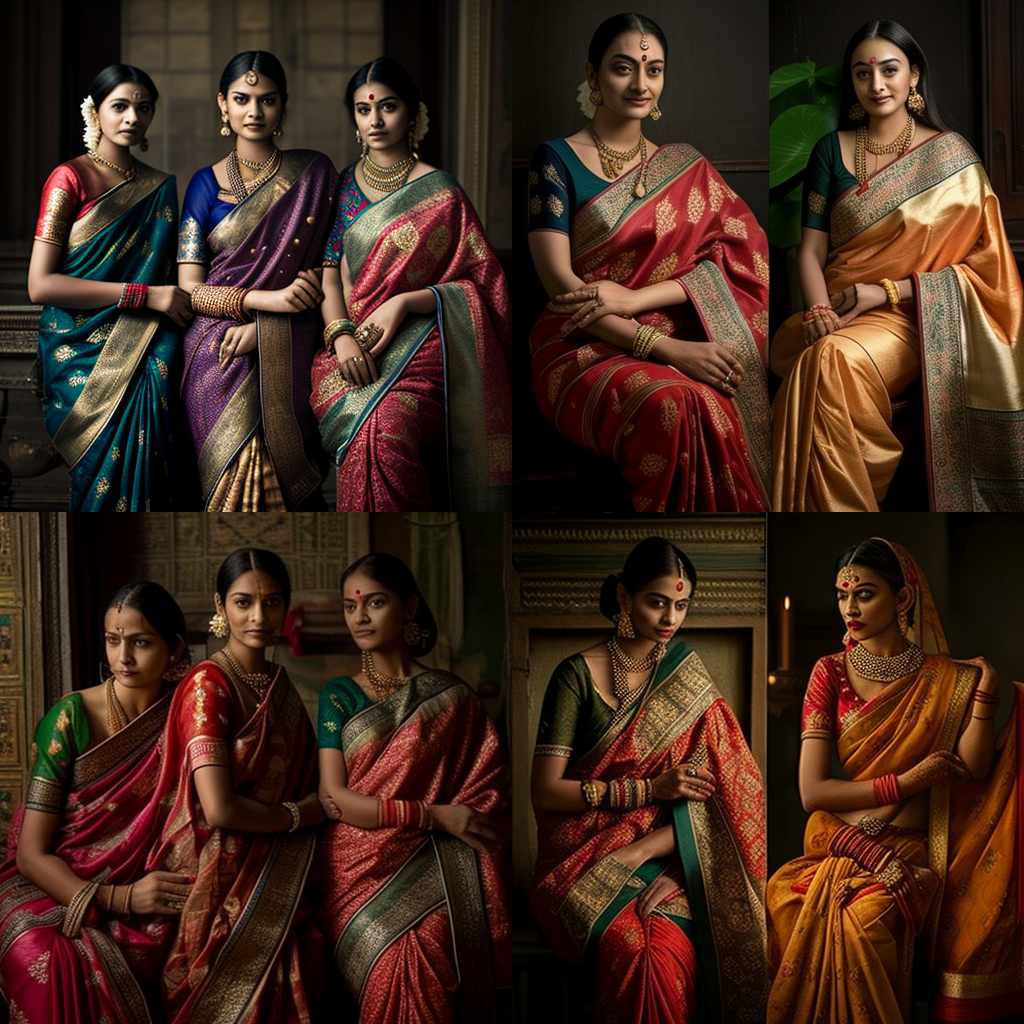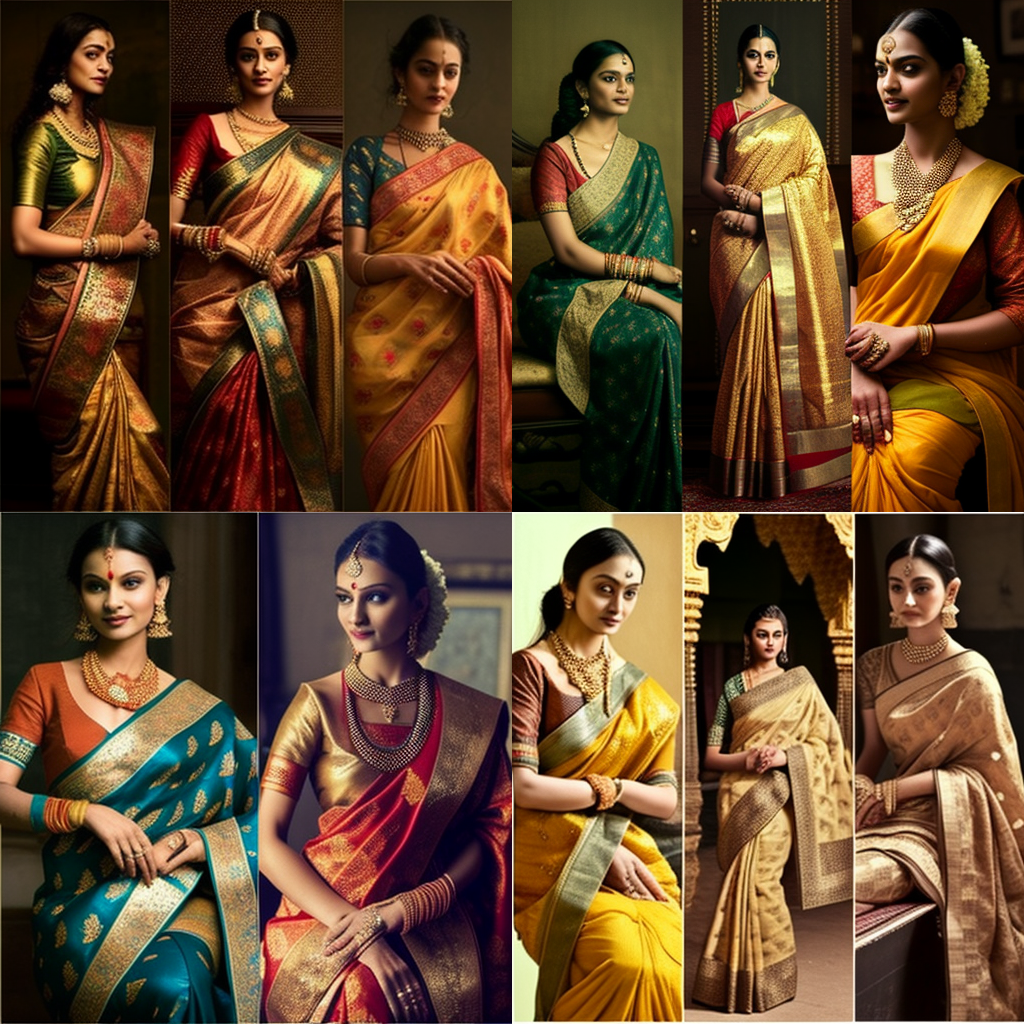
How to Choose the Right Banarasi Saree | The Usee Shop Blog
Choosing the Right Banarasi Saree: A Guide to Understanding Different Fabrics and Weaves
One needs to consider various factors while choosing the most suitable Banarasi saree. The right style can have a profound influence on the way people perceive you. Hence, it would help if you chose wisely after imbibing the knowledge of the Banarasi saree world. Are you ready to be enlightened on this awe-inspiring trail through the weaves and fabrics of the Banarasi saree?
Divine creations: The Unique Fabrics of a Banarasi Saree
Each fabric has its own splendour, bred by nature to have unique qualities. They differ in texture, tensile strength, durability, and feel. Each of them exudes a distinctive charm. We must understand the nuances of each fabric to understand what they bring to the table.
KATAN SILK SAREE
Katan silk is a luscious and finely-woven soft fabric made from the highest quality mulberry silk threads twisted to form a sturdy and durable yarn. It is hand-loomed in a plain weave with silk threads in the warp and the weft.
Their compact nature enthrones them in the heart of Varanasi, filling whoever wears it with an infinitude of joy. Having a textured background, a wide variety of embroidery can be engraved on this silk. It is a widely-acclaimed bridal trousseau due to its undeniable glamour that leaves no attention untouched.
ORGANZA SAREE or KORA MUSLIN SAREE
Long silk spindles are meticulously interlaced during the spinning process and then submerged in acid to form thick fibre clusters. The acid modifies the yarn's chemical characteristics, increasing its durability. With its weightlessness, this fabric imparts a touch of elegance. However, it is also fragile, which makes it appear translucent.
It inculcates intrinsic microscopic holes during production, facilitating an excellent ventilation system. This makes the fabric very breathable, especially during humid weather. The most embracing quality of organza fabric is that it flows like cream, which renders a distinctive tone of grace to the woman.
CHIFFON SAREE
Chiffon is an incredibly gossamer fabric which emanates a shimmer like the sparkling waves on a summer day. If observed under a microscope, it appears like a mesh or a net, with a transparent and gauze-like appearance. It is the perfect fabric to subtly flaunt your natural body curves.
The fabric's weave may create inevitable wrinkles due to using s-twist or z-twist crepe yarns. This might make it rough to the touch. Despite this, it still retains its luxurious allure. In addition, it has a sheer texture and a relatively higher stretch due to it being woven in different directions.
TUSSAR SILK SAREE
Tussar is woven from silk derived from the larvae of several breeds of silkworms belonging to the moth genus. In this way, it is one of the rarest silks in India. It has lower durability than other silks because it is made from shorter fibres.
However, it has a highly-embossed texture with a naturally deep golden sheen. In the fabric hierarchy, these unfazed qualities give it undeniable glory.
TISSUE SILK SAREE
Tissues get their unusual name because they are constructed of pure silk threads woven together so delicately that they feel like paper. They are woven with great golden and silver zari work, giving them a sharp appearance and setting them apart from other fabrics. They have portability and an unparalleled delicacy. They weigh next to nothing and shine beautifully in the moonlight.
SEMI DUPION SILK SAREES
The Dupion fabric offers a compelling look that leaves all in awe. Their rusty appearance, royally- textured slub and dual-thread nature put them apart from all other silk sarees. In addition, their light-reflecting and allergy-prevention mechanisms are mind-blowing features that enthral the viewer.
Sacred journeys: The intricate weaving techniques used to create Banarasi sarees
A Banarasi saree can be a masterpiece or a vibrant mosaic of different weaving techniques. How they are made determines what they ultimately look like. Varanasi, a city enriched with cultural heritage, houses a myriad of intriguing weaving techniques that will leave you absolutely entranced.
Ektara weaving style
An intricate weave that resembles needle-point, this type of weaving is labour-intensive. It is time-consuming and is carried out using a multi-warp heddle shaft and a pit loom. This weave creates a paper-thin mesh-like structure which has ultra-high weightlessness to it.
It is generally used to create glistening Banarasi sarees with sheer embellishments such as golden zari work. However, remember that it is a slow artisanal heirloom. Two master weavers can take around nine months to weave a Banarsi saree using this technique.
Jacquard weaving style
Jacquard weaves are well-known for engraving stunning brocades in Banarasi sarees. This technique is primarily characterised by woven-in patterns such as embroidered designs and tapestry effects. It is crafted on a special loom containing jacquard attachments that direct individual warps.
This gives the saree a finished look and an all-encompassing appeal. However, Banarasi sarees made from this weaving technique are expensive due to the complex machinery and person-hours required.
Cutwork Weaving style
This weaving technique has the primary advantage that all the brocades can be sewn on the Banarasi saree simultaneously. Weft threads are intertwined from one end to the next in the warp shuttle. This creates glamorous textures at the surface of the fabric, called zamin. Due to this, the technique is relatively easy to perform.
Kadhwa weaving style
The strenuous and extensive Kadhwa-styled weave is an age-old art of looming used to incorporate motifs in the saree. Because these motifs are embedded separately, a substantial workforce is required. This technique is highly beneficial for weaving motifs that are not interlinked to each other and significantly differ in design, size and colour.




Leave a comment
This site is protected by hCaptcha and the hCaptcha Privacy Policy and Terms of Service apply.